HR Analytics Dashboard
 Preeyal Jyotika
Preeyal Jyotika
Objective
In this blog, our objective is to provide a comprehensive analysis of the HR analytics dashboard by exploring the six key factors influencing attrition within the company.
Through interactive visualizations, we aim to compare the distribution of active employees with attrition count, shedding light on the factors contributing to attrition.

Developed a comprehensive dashboard using Tableau Public to present the analysis findings visually and intuitively.
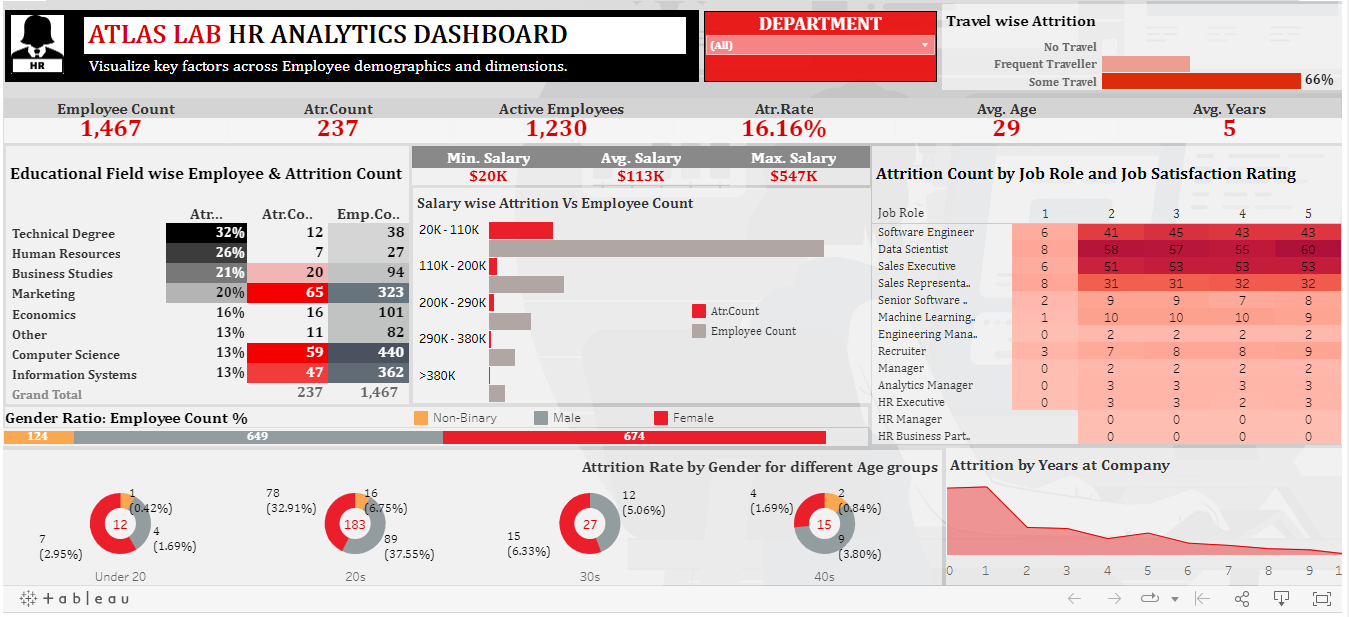
Exploring Attrition Factors
KPI
These key performance indicators (KPIs) offer a comprehensive overview of the workforce in terms of attrition, age, and tenure.
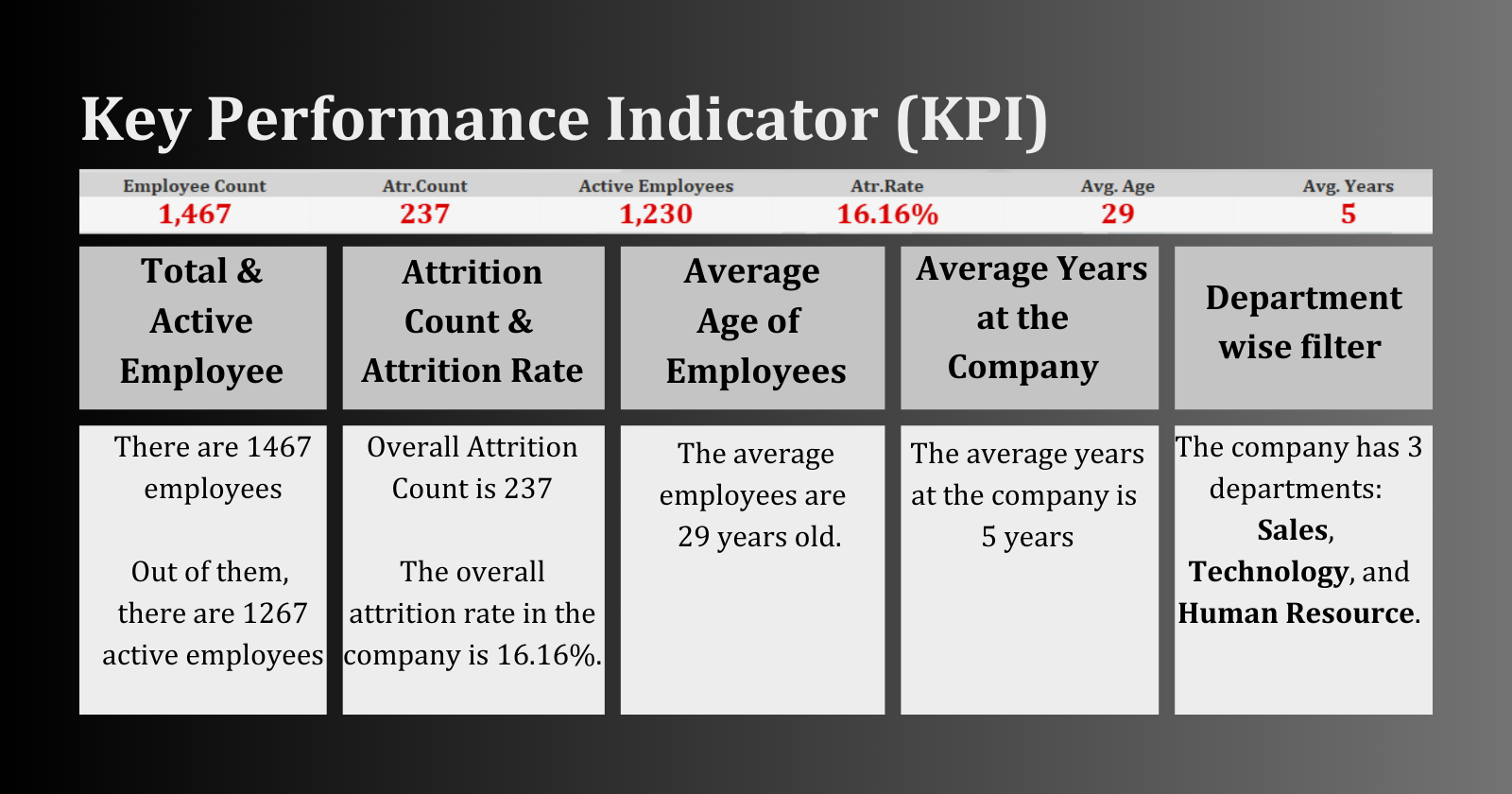
Department-wise Filter
They enable further analysis and decision-making within each department and the organization as a whole.
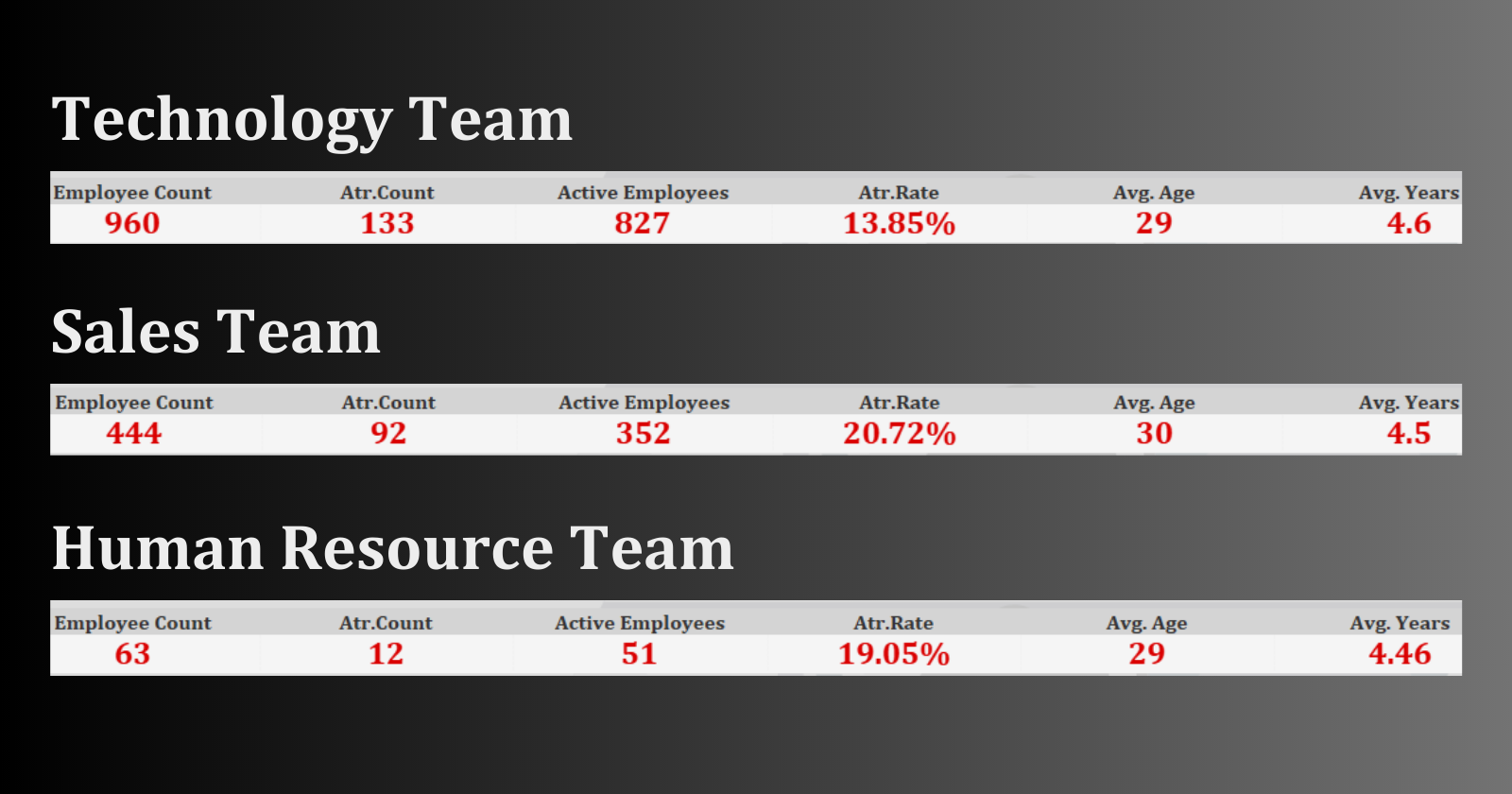
The overall attrition rate in the company is 16.16%.
- The sales department has the highest attrition rate at 20.72%, followed by Human Resources with 63 employees at 19.05%, and Technology with maximum employees (960 employees) at 13.85%.
Salary Disparity
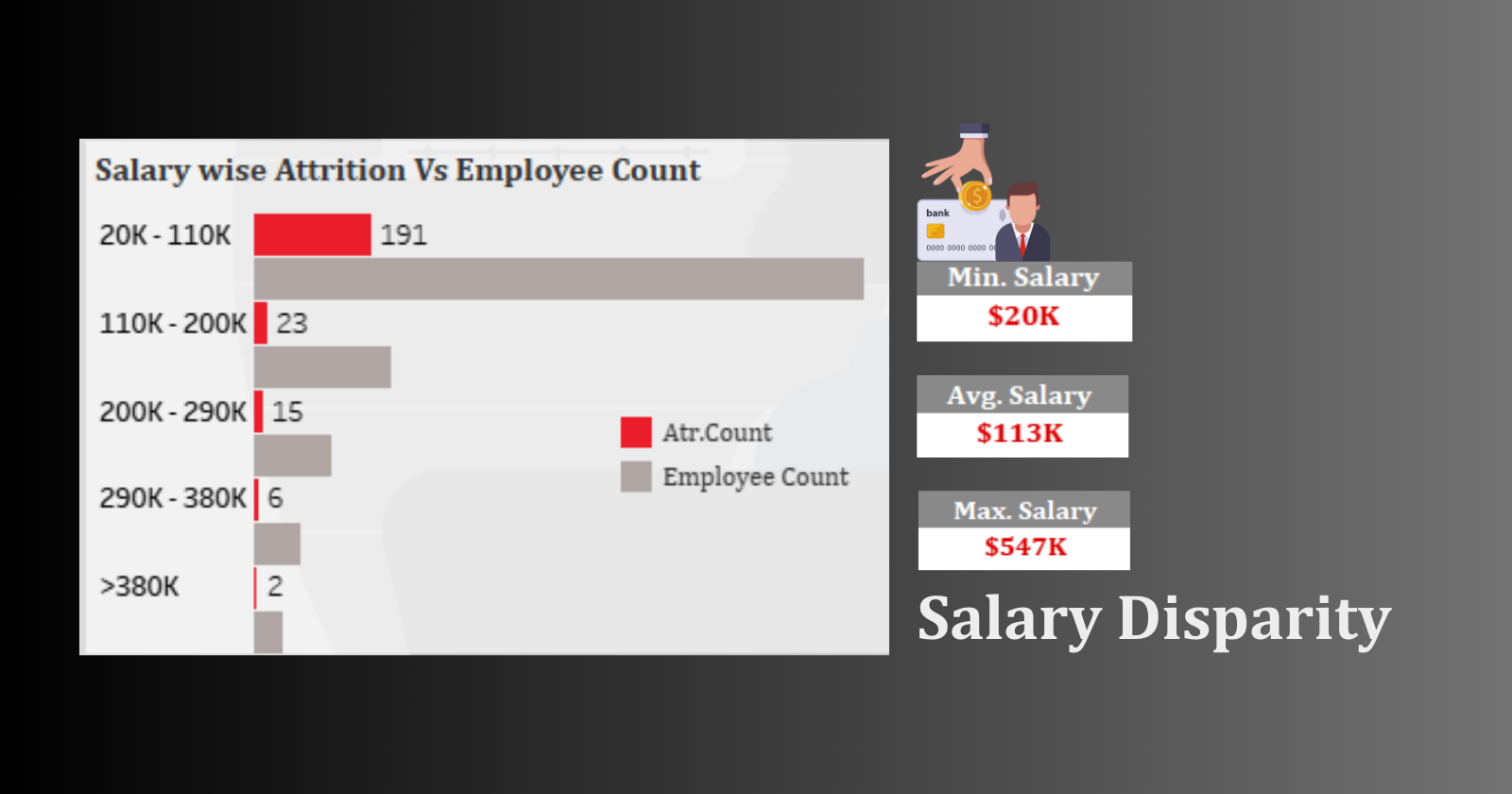
There is a significant gap between the minimum salary (20k) and the maximum salary (547k), with an average salary of 113k.
The majority of employees (995 out of 1467) fall within the salary range of 20k-110k. Among them, the highest attrition rate is observed, with 191 out of 237 attritions.
Job Role
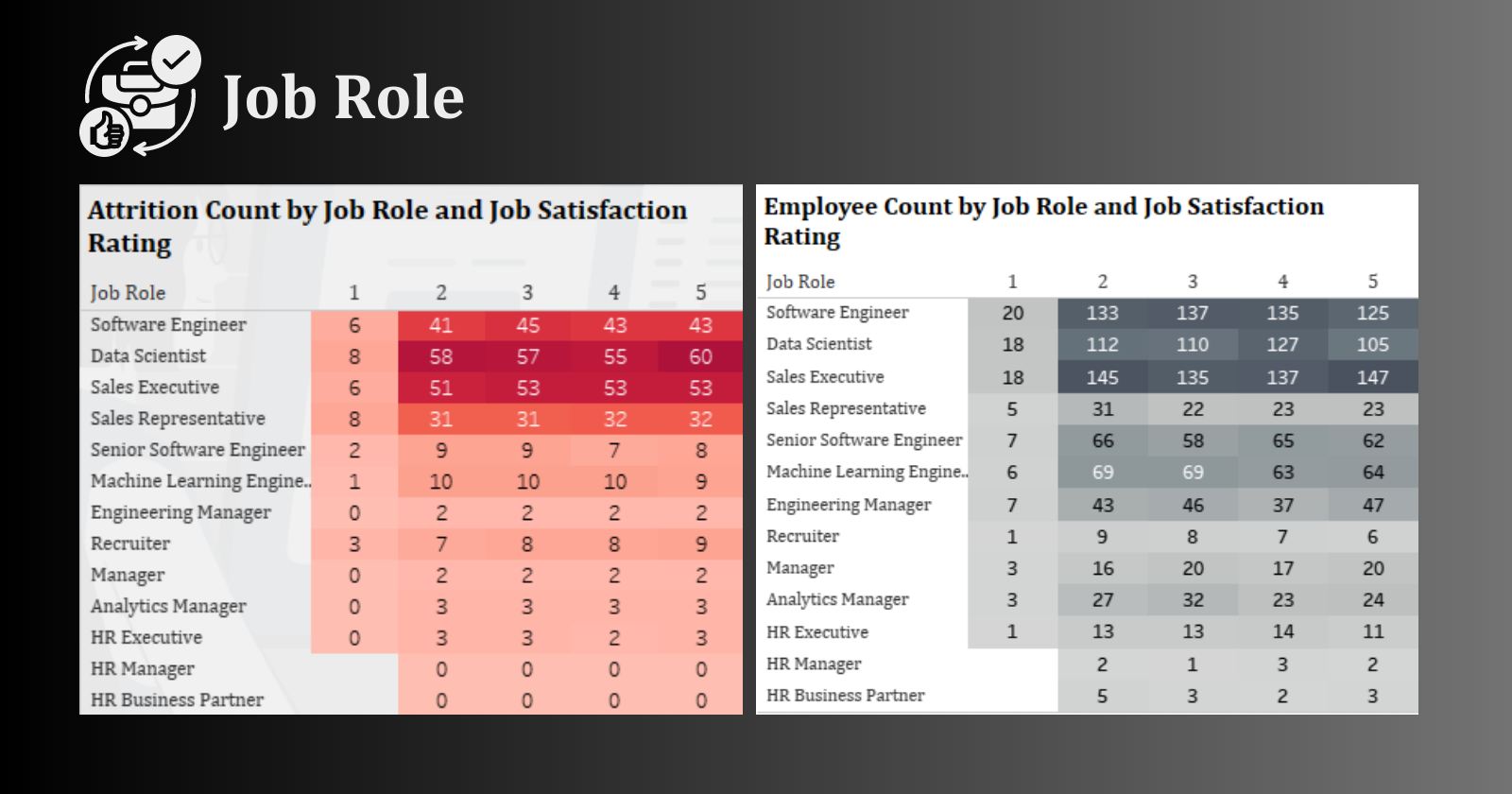
Visualizations demonstrate the contrast between job satisfaction levels and attrition for different job roles.
In the above visualization, job satisfaction scores versus job roles for active employees(Grey) are compared to those who have left the company(i.e. attrition count)(Red).
Software Engineers & Data scientists within the organization exhibit a higher level of dissatisfaction, leading to maximum attrition.
Sales executives and sales representatives also experience a notable attrition rate.
Age Distribution
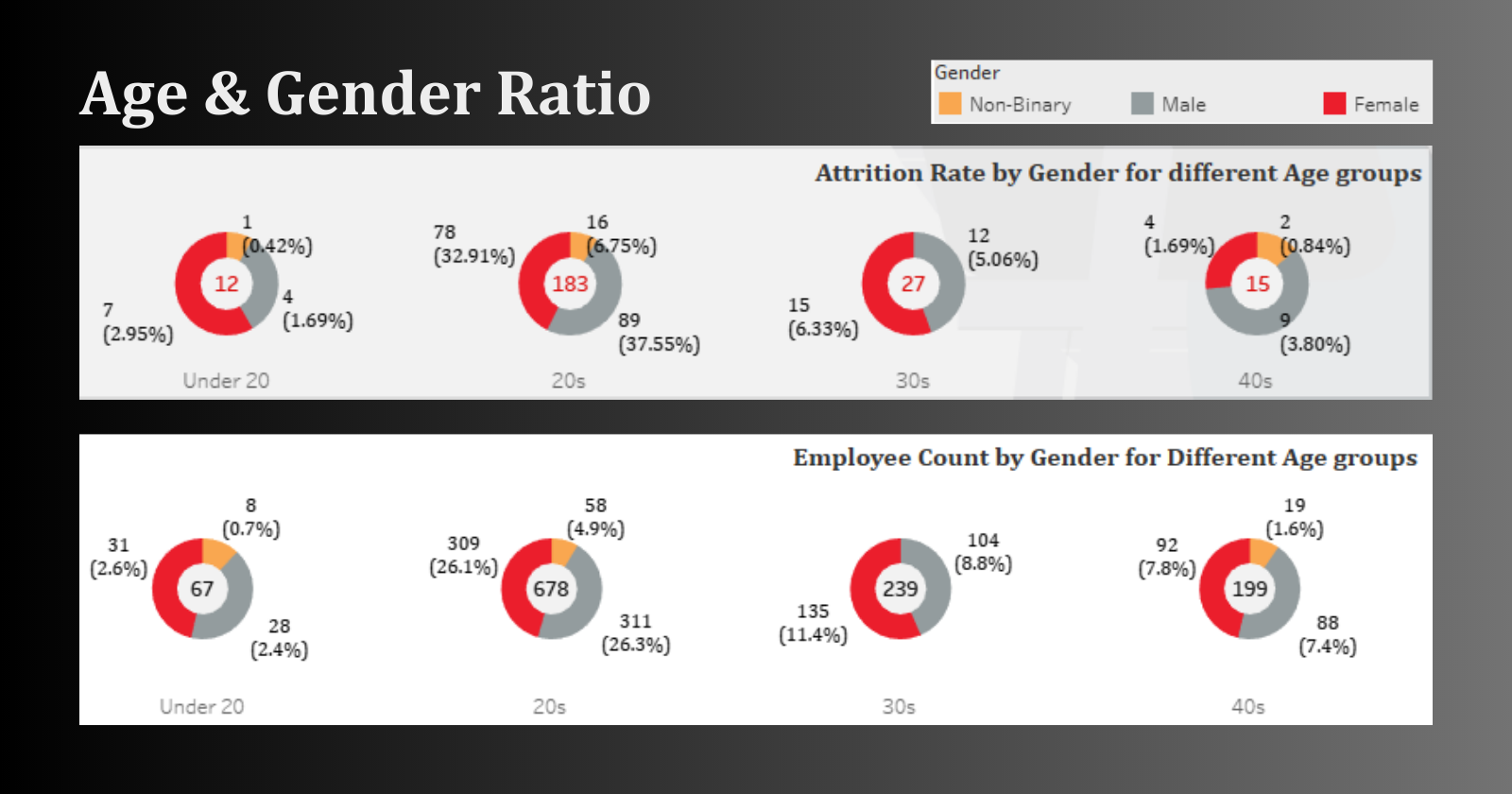
In the age distribution of employees who left the company, a significant proportion of attrition was observed among younger employees.
Specifically, 77.21% (183 employees out of 678) belonged to the age group of the 20s, indicating a higher turnover among this demographic.
The next age group, the 30s, accounted for 11.39% (27 employees out of 239) of the attrition.
A smaller number of employees in the age range of 40s (15 individuals out of 199), under-20s (12 out of 67 employees), and 50s (1 employee) were part of the attrition.
Educational Background
Analyze the attrition rate, attrition count, and employee count based on educational background.
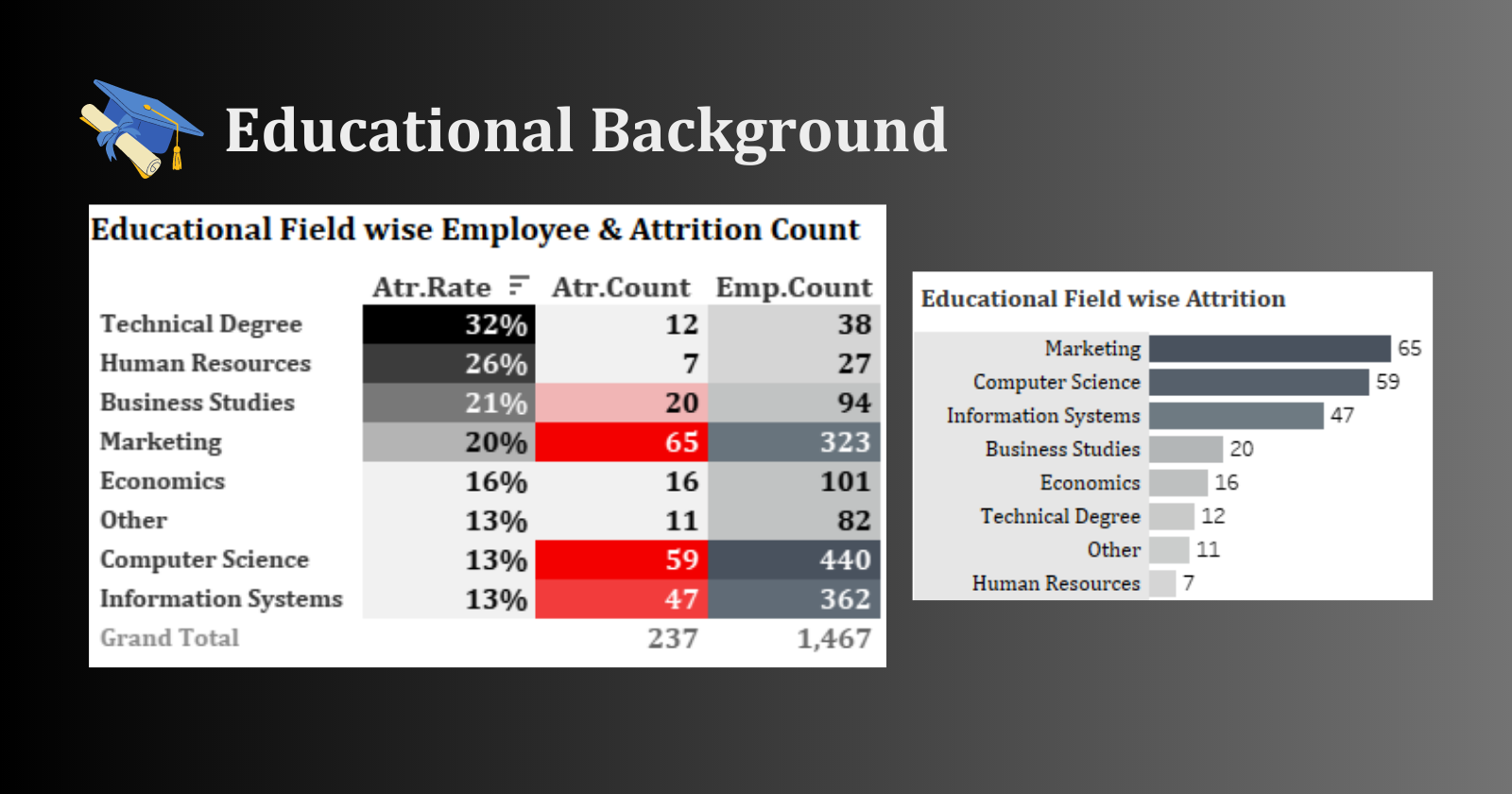
Employees with a technical degree have the highest attrition rate at 32%. This indicates that individuals with a technical background are more likely to leave the company.
Marketing professionals, who primarily belong to the sales team, have an attrition rate of 20%.
Human resources employees with an educational background in HR experience, have an attrition rate of 26%.
Business studies, which is aligned with the technology department, has an attrition rate of 21%.
Experience/ Tenure at the Company
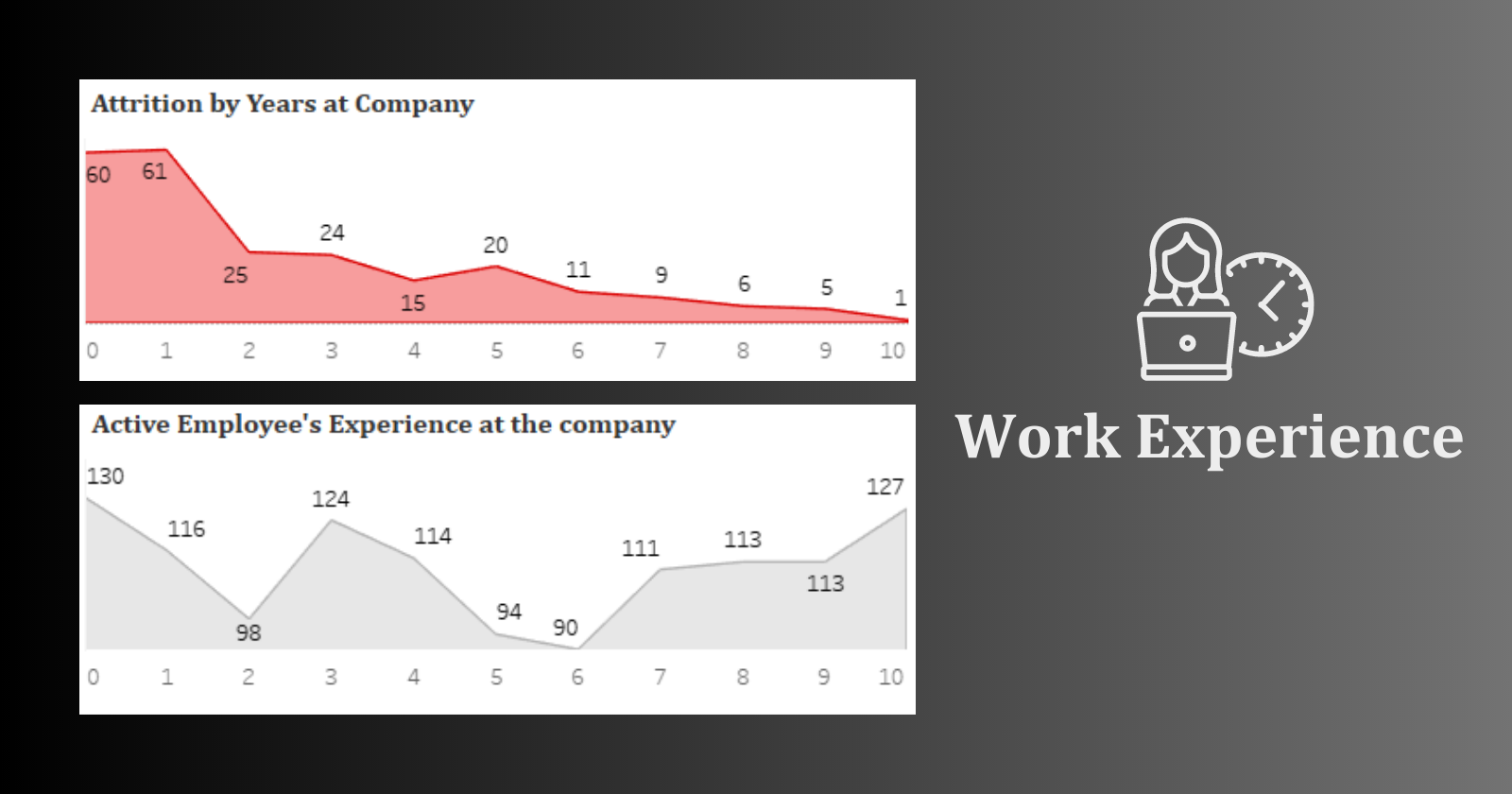
A considerable attrition rate of 25% is observed among employees with 0 and 1 year of experience in the company.
This suggests that newly hired individuals may face challenges or factors contributing to their departure.
The attrition rate experiences another peak at 3 years of experience, followed by a subsequent increase at 5 years of experience.
Business Travel
Among employees categorized by their travel frequency, those with some travel (66%) exhibit the highest attrition rate, followed by those with frequent travel (29%).
This finding implies that a significant portion of employees who left the company were engaged in moderate levels of business travel.
It suggests that challenges or factors associated with travel may contribute to attrition.
Importantly, this trend remains consistent across all departments, indicating the need for the HR team to delve further into this matter.
Special Remark

The sales team exhibits the highest attrition rate among all departments, indicating a concerning trend.
Further analysis reveals that employees with technical degrees and marketing backgrounds, primarily within the sales team, are more likely to leave the company.
In particular, job roles such as sales executives and sales representatives have a significant count of attrition. This suggests that there may be specific issues within the sales department that contribute to dissatisfaction and turnover.
Additionally, it is worth noting that employees with 0-1 year of experience show a considerable attrition rate of 25%, followed by peaks at 3 years and 5 years of experience.
Furthermore, employees with moderate levels of business travel, categorized as "some travel" (66%) and "frequent travel" (29%), demonstrate higher attrition rates.
This consistent trend across all departments suggests that challenges or factors related to travel may contribute to employee attrition.
Conclusion
Developed and implemented an interactive analytics dashboard using Tableau, providing actionable insights and visualizations for informed decision-making.
Subscribe to my newsletter
Read articles from Preeyal Jyotika directly inside your inbox. Subscribe to the newsletter, and don't miss out.
Written by

Preeyal Jyotika
Preeyal Jyotika
Data Analyst @United Airlines✈️